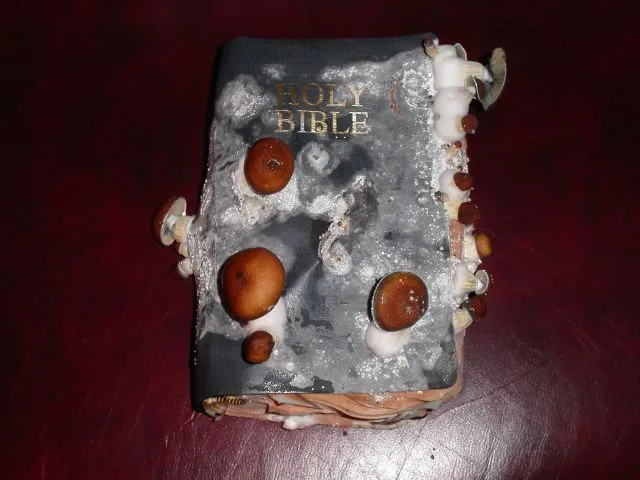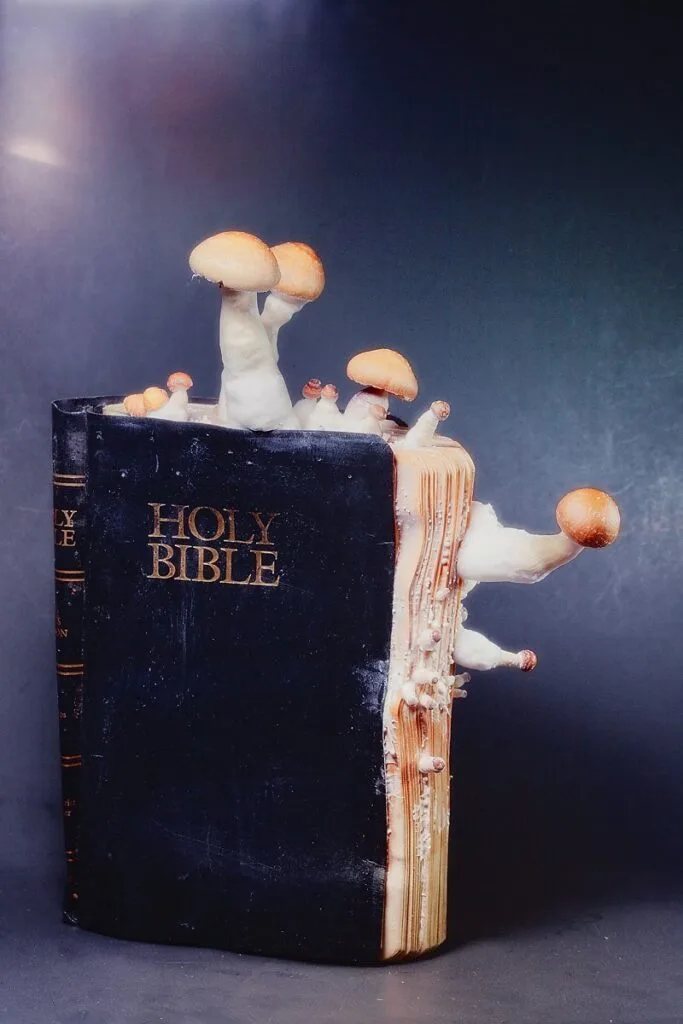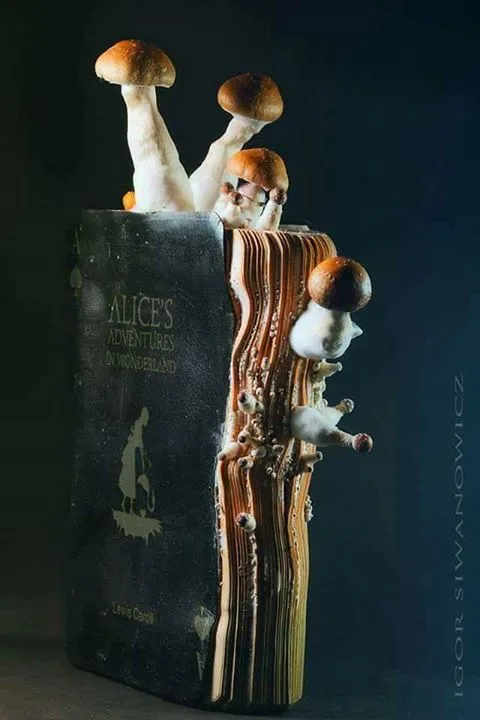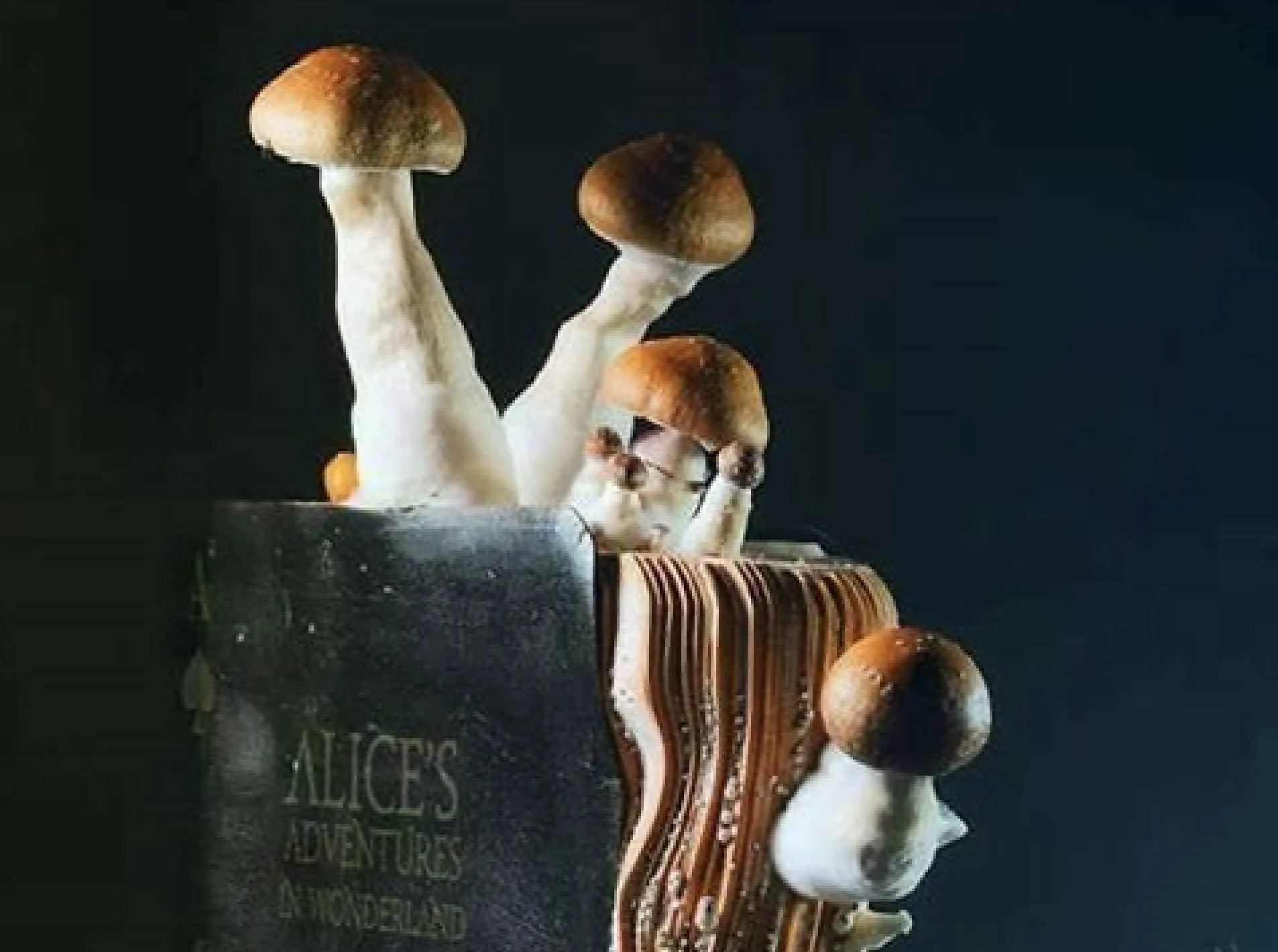The photo became especially popular due to the fact that this book is “Alice in Wonderland”, in the plot of which mushrooms play a special role. We have verified the accuracy of such publications.
In the photo we see a volume of “Alice in Wonderland” in English. The book swelled from moisture, and mushrooms sprouted from its pages. Captions usually read: "Water damaged copy of Alice in Wonderland causing mushrooms to grow." The authors of some posts clarify that this happened because the book is ancient: “Before 1885, fabric was added to paper, and therefore mushrooms grew. Afterwards they stopped adding fabric, and mushrooms can no longer be grown on books.” Similar posts can be meet V Facebook, in "VKontakte", on entertaining websites and blogs.
Using a reverse image search, Verified found that the mushrooms in this photo are Psilocybe cubensis, also known as cubensis and magic mushrooms. This is one of the most famous types of hallucinogenic mushrooms in the world. Their natural habitat is Central and South America, but cubensis is widely grown under artificial conditions around the world (legal in some countries, prohibited in others).
IN English-language discussions, dedicated to this photo, they write that the book was specially treated with spores, and name the author of the photo as the user Roger Rabbit. This is the nickname used for several decades by American Mark Keith, a mushroom enthusiast and founder of Mountain Mushroom Farm. On his farm, Keith grew primarily edible mushrooms (such as shiitake and oyster mushrooms), but experimented a lot with medicinal and hallucinogenic mushrooms as a hobby. On mycological forums shroomery.org And mycotopia.net he often posted photographs of his experiments in growing mushrooms in the most unusual substrates. Books often became such a substrate: for example, he grew reishi And shiitake on telephone directories, and cubensis on the Bible.

In one of the forum posts he explained, how it was made: “It was a Bible with pages torn out in the middle, and rye grains treated with spores were inserted into the void. All this was incubated in a bag with a filter insert until the formation of primordia began.”
However, we did not find “Alice in Wonderland” in his gallery. And no wonder: how writes "Bulletin of the Wisconsin Mycological Society", the real author of this photograph is a biochemist and neuroscientist Igor Sivanovich. He is known not only as a scientist, but also as a naturalist photographer, specializing primarily in macro photography. Apparently, Sivanovic was inspired by the experiments of Mark Keith and also tried to grow mushrooms on the Bible. Most likely, the Bible was initially chosen as a substrate (by both Keith and Sivanovich) not for any ideological reason, but only because copies of the book are easy to find for free and the Bible is distinguished by its substantial volume and impressive appearance.

Later, Sivanovich apparently decided to edit one of his photographs of the Bible, changing the cover of the book to "Alice in Wonderland" to give the photograph additional meaning. The fact that this is the same book is confirmed by the identical arrangement of the fruiting bodies of the mushrooms and the white spots on the edge of the cover. Initially, the photo was distributed with a watermark with the author’s signature, but later it began to be published cropped.

Neither Verified nor the Bulletin of the Wisconsin Mycological Society has been able to determine where or when these photographs were first published. We requested a comment from Igor Sivanovich, but at the time of writing this analysis we had not received a response.
Thus, the mushrooms on the book shown in the photo did not grow by chance, but were specially cultivated. Moreover, the original publication was not “Alice in Wonderland”, but the Bible.
Cover photo: fragment of a viral photo. Source: Facebook
Read on topic:
- Is it true that eating wild mushrooms is dangerous because of the cadaveric poison that accumulates in them?
- Is it true that the Bible is the most stolen book in the world?
- Is it true that mushrooms in the diet can completely replace meat?
If you find a spelling or grammatical error, please let us know by highlighting the error text and clicking Ctrl+Enter.






